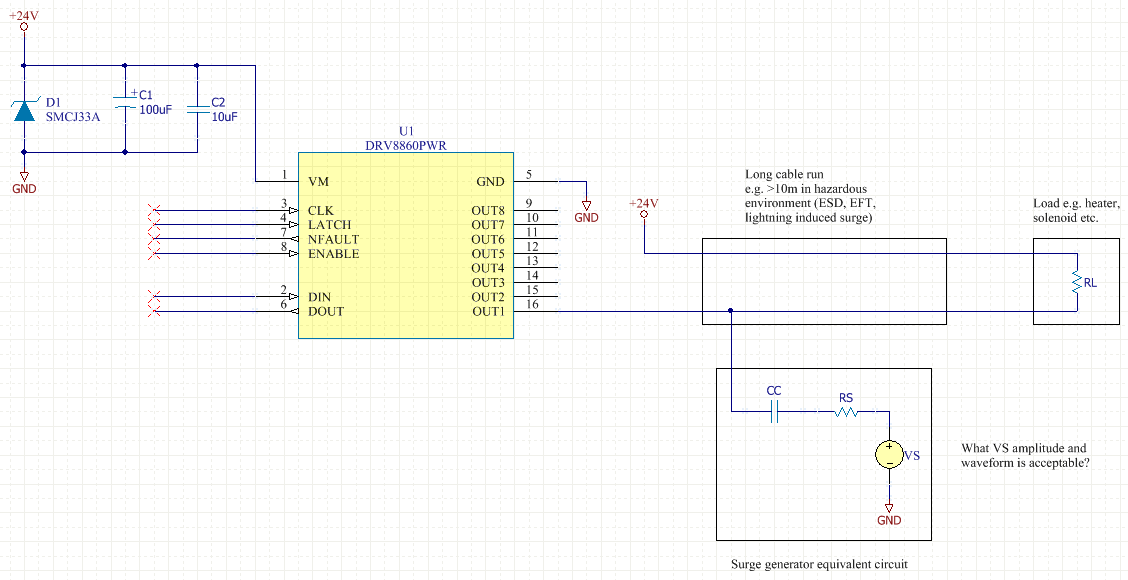I notice this power switching device specifies only standard 2kV HBM ESD ratings on all pins. I note also that, because it has relatively strong MOSFETs and VDD clamp diodes, it may not be so trivial to simply add e.g. TVS protection to the outputs. What is the recommended ESD mitigation strategy for this part? What topology or devices would be recommended or compatible (e.g. TVS, clamp diodes, peak current limiting devices)?
On second thought, would TVSs be acceptable, actually? The absolute maximum ratings specify output voltage range up to 40V independent of VM voltage. This directly contradicts the block diagram, which shows diodes between those connections. Which information is correct?
Your answers are appreciated,
Tim


